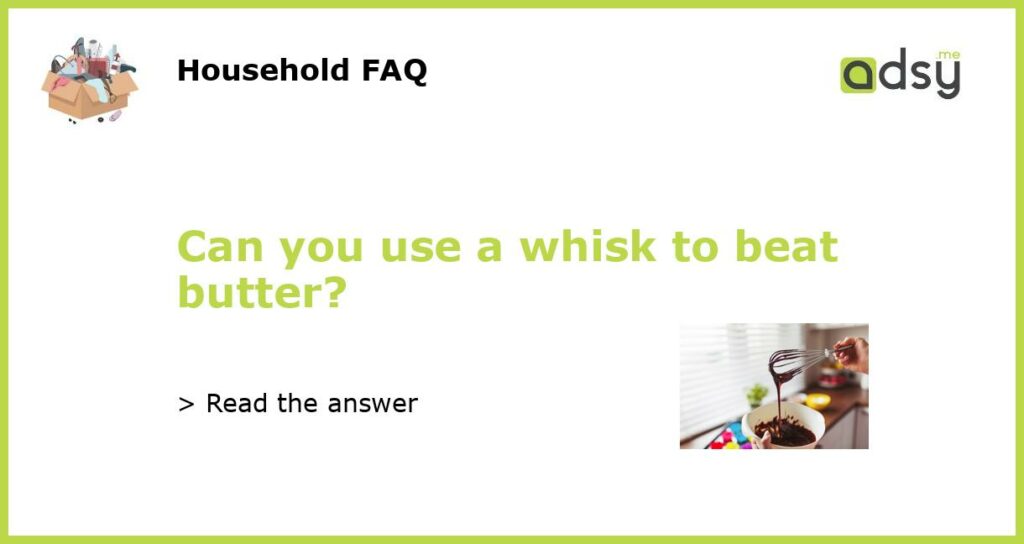Yes, you can use a whisk to beat butter
When it comes to baking, butter is a staple ingredient in many recipes. It provides moisture, flavor, and structure to baked goods. In some recipes, you might be required to “beat” or “cream” the butter, and you may wonder if you can use a whisk for this purpose. The answer is yes, you can use a whisk to beat butter, and in fact, it can be a convenient and effective tool for the job.
The technique of beating butter with a whisk
To beat butter with a whisk, you’ll want to start with softened or room temperature butter. Using a whisk allows you to incorporate air into the butter, which helps create a light and fluffy texture. Start by placing the butter in a mixing bowl and use the whisk to vigorously beat it until it becomes soft and creamy. You can also add sugar to the butter and continue whisking until it becomes light and fluffy, which is often called creaming. The whisk helps break down the butter and incorporate air, creating a homogeneous mixture.
The benefits of using a whisk to beat butter
Using a whisk to beat butter offers several benefits. Firstly, a whisk is a versatile tool that can be used for various baking tasks, so it is likely to be readily available in your kitchen. It is also a relatively easy tool to handle, and by using a whisk instead of an electric mixer, you have more control over the process. Additionally, using a whisk allows you to incorporate air into the butter gradually, which can result in a lighter and more evenly mixed batter. Whisking can also help create a creamy texture and prevent lumps from forming.
Alternative methods for beating butter
While a whisk is a handy tool for beating butter, it is not the only option available. Electric mixers, such as stand mixers or hand mixers, are commonly used to beat butter quickly and efficiently. These mixers offer more power and speed, making the process faster and easier. However, if you don’t have access to an electric mixer or prefer a hands-on approach, a whisk can yield satisfactory results.
Alternatively, some bakers prefer to use a wooden spoon or a rubber spatula to beat butter. These tools are gentler on the butter and allow for more control over the mixing process. However, it may require more effort and time compared to using a whisk or an electric mixer.
Tips for successful butter beating with a whisk
When using a whisk to beat butter, keep in mind the following tips for a successful outcome:
- Start with softened or room temperature butter to make it easier to beat.
- Hold the whisk firmly and use vigorous, circular motions to beat the butter.
- If adding sugar, gradually incorporate it into the butter while whisking.
- Be patient and continue whisking until the butter becomes soft, creamy, and light.
- Scrape down the sides of the bowl regularly to ensure uniform mixing.
Using a whisk to beat butter is a practical and effective method, especially if you don’t have access to an electric mixer or prefer a more hands-on approach. It offers versatility, control, and the ability to gradually incorporate air into the butter. With the right technique and a little patience, you can achieve perfectly beaten butter using a whisk.






